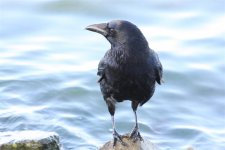senatore
Well-known member
I have a 40D and a 400 prime lens which I use for taking bird shots usually hand held.
Earlier on I was reading Mike Atkinson's guide to taking birding shots which is very informative but when discussing metering modes he recommended "Evaluative Metering" mode for nearly all situations whereas I've been using "Spot Metering" mode.
Any advice would be welcome.
Max.
Earlier on I was reading Mike Atkinson's guide to taking birding shots which is very informative but when discussing metering modes he recommended "Evaluative Metering" mode for nearly all situations whereas I've been using "Spot Metering" mode.
Any advice would be welcome.
Max.





